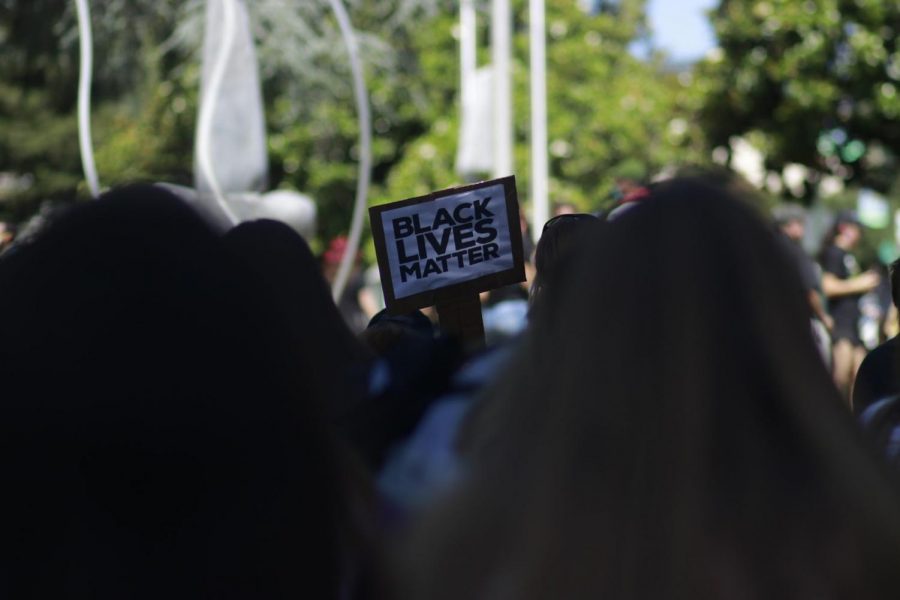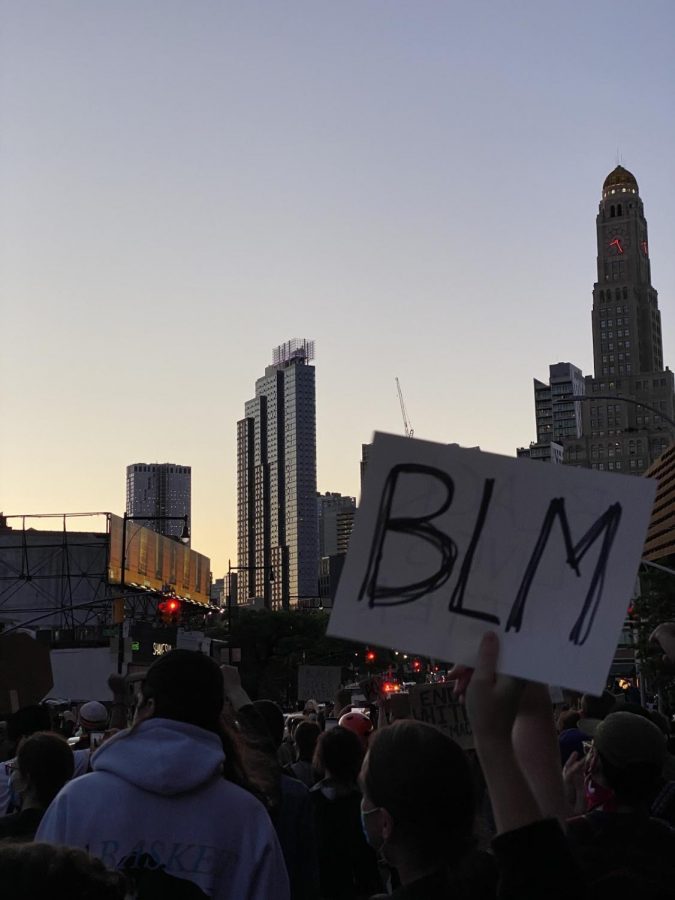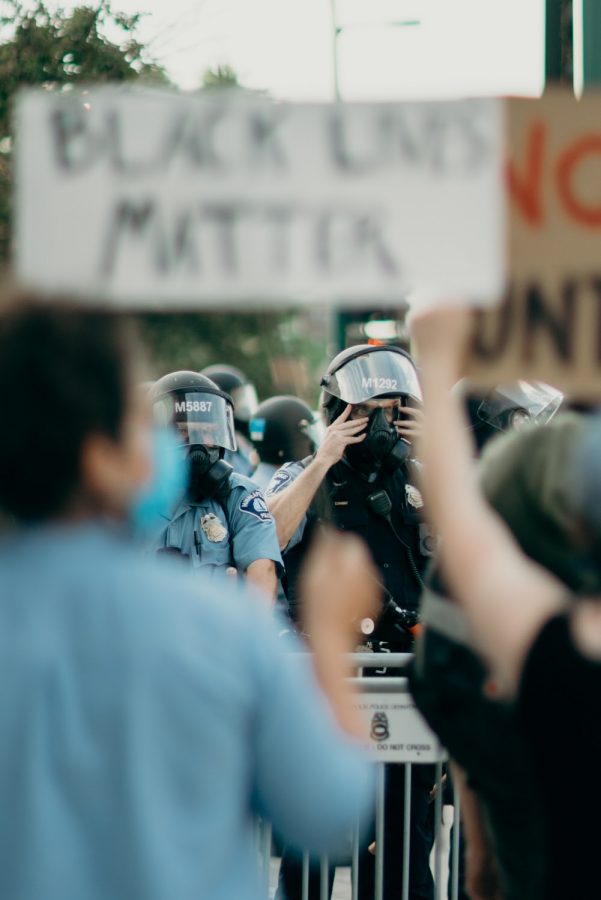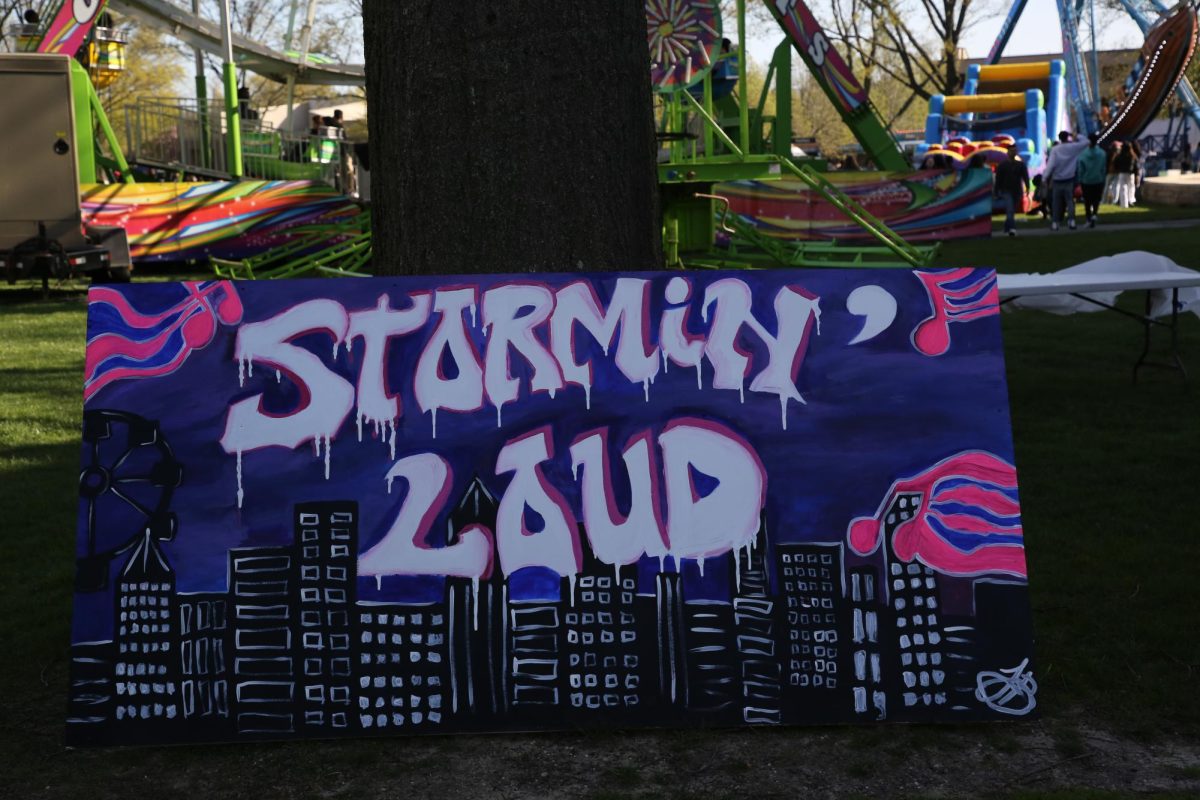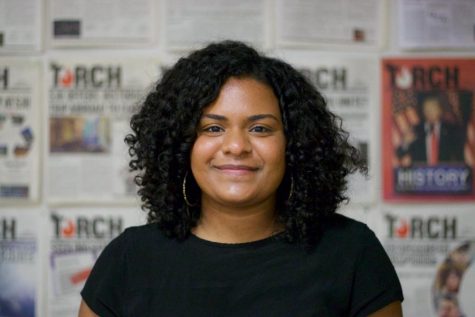The nation has been in turmoil since May 25 when George Floyd, a black man, died after a police officer kneeled on his neck for eight minutes and 46 seconds. Floyd was already in police custody and had been pinned to the ground and handcuffed prior to the officer kneeling on his neck.
That same night, protests against police brutality emerged in Minneapolis. Now – more than a week later – similar protests have erupted in cities across America and around the world.
Social media platforms are being flooded with links to various donation funds, petitions, educational resources and calls-to-action. And, despite the COVID-19 pandemic, many individuals are taking to the streets to protest, to advocate and to mourn.
Protests have taken place in at least 140 cities across the U.S. since Floyd’s death, according to the New York Times. The National Guard has been activated in at least 21 states as unrest in some cities has escalated in the form of violence and property destruction.
Protesters are being met by an increased police presence and usage of force, officers using tear gas, mace and even firing rubber bullets into crowds at protests in Minneapolis, Washington, D.C., New York, Atlanta and other cities.
As St. John’s students are sprawled across the country in 45 states during summer break, they are witnessing the impact of Floyd’s death in their communities manifest itself in different ways.
The Torch spoke with six students who shared their stories of attending protests in cities around the country, participating in online activism, why being vocal about their beliefs is important to them and where they hope our nation goes from here.
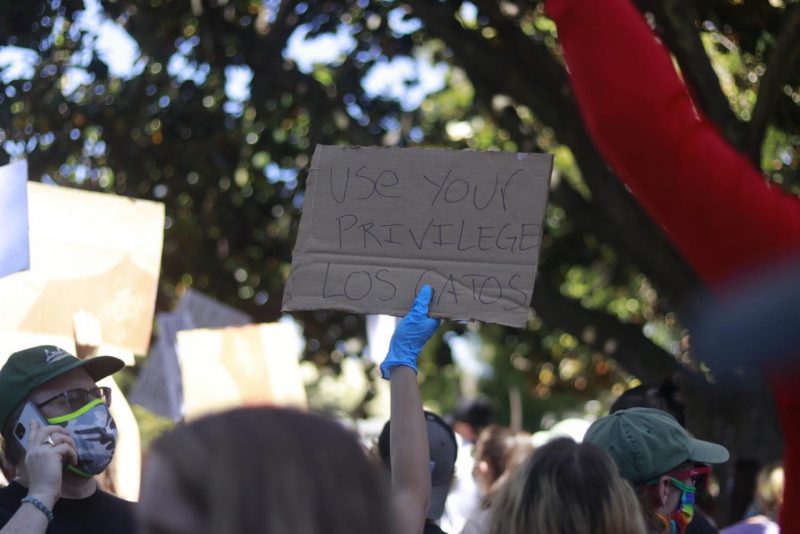
For senior Amel Viaud, her experience began with a tweet that she sent out on May 28, urging fellow Bostonians to gather in front of the Boston State House on May 31.
“To watch something like the killing of George Floyd through my phone screen, that shook my heart,” Viaud said. “So I was like … hey Twitter, how about we go to the State House Sunday evening and say our word?”
Viaud, along with two friends, created flyers for the protest to share on social media that included an official statement for their demonstration, a list of demands and a request for participants to practice peaceful and safe protesting by wearing masks and social distancing to the best of their ability.
The flyer created for the demonstration had to distinguish this protest from the national Black Lives Matter organization, and so Viaud and her two friends dubbed themselves, “Black Boston.”
“Black Lives Matter, even though it’s a national organization, it’s also a feeling,” she explained. “[Black Boston is] not an official organization, an official activist group, we’re still working on that because this started a week ago.”
“I thought that from the 100 likes [on the tweet] it would be a calm 60 people,” Viaud said. “Next thing you know it went from 3,000 people to 10,000 people, to being bigger than the Women’s March.”
Viaud marched with protestors from Nubian Square to the State House. “We read our demands, read our statements, and we couldn’t believe it,” she said.
Viaud has been a member of Haraya, St. John’s Pan African Student Coalition, since the first semester of her freshman year. She marched in her Haraya T-shirt, alongside 2019 SJU alum and former VP of services for Haraya, Todd Davidson.
“I had to carry the organization that taught me everything I know on my back,” Viaud said. “So I wore my shirt and remembered everything that Ebony Calvin, the director of Campus Activities, taught me, and Jodi Cox, [former director of Campus life] … and Dr. [Andé] Mckenzie and Professor [Oscar] Holt and all of the black people who were mentors to me at St. John’s.”
“All the things that they taught me through literature, through activism, through events, through GBM’s and e-board meetings, I carry that with me,” she said. “I carry that professionalism and I was able to gather thousands of people.”
“I felt responsible to carry the legacy of black life. A lot of the time we talk about black death, and black death and black death. I wanted to be there and represent what it is like to be a black person and live. Because a lot of the time black people – to save themselves from being murdered by the police, or being expelled from school – they exist. They cut their dread and defy their culture and they won’t express themselves freely so they can live another day.”
“I was going in there with no fear, and I decided to live because George Floyd didn’t get to. I decided to live because Breonna Taylor didn’t get to. I decided to live and walk because Ahmaud Arbery couldn’t run.” Viaud said. “I have to remember why I do this, what’s pushing me to do this.”
As of June 3, protests in Boston continue with hundreds of participants.
Senior Atabong Khumbah attended a protest in Baltimore, Maryland on May 29. Khumbah described the protest as “a peaceful demonstration with people of all races.” Khumbah and the crowd were “chanting and telling [their] truth, yelling the names of the people who have been murdered because of the color of their skin.”
“That could’ve easily been one of my family members, or someone I call my friend. I can’t just sit comfortably and not do anything,” Khumbah said. “We’re not protesting and marching because one person died, we’re doing it because this [has] been going on for years – years and years of systemic oppression and racism, this was only the tip of the iceberg.”
“I’m tired of watching people that look like me get treated worse because of the color of their skin, something we can’t change something we were born with. If people want to embrace black culture they need to embrace all of it – the good and the bad,” Khumbah said. “Don’t try and pick what you want to accept because we as black people can’t even do that.”
“I hope that the officers that were involved in not just George Floyd’s death but all other deaths are held accountable and convicted of committing murder because that’s exactly what they did,” Khumbah said.
Baltimore has been home to Black Lives Matter protests for years, including in 2016 after the death of Freddie Gray, a 25-year-old black man who died of spinal cord injuries while in police custody.
Ongoing protests in New York City have taken place in various boroughs – large protests have been held in Jackson Heights, Queens, across Manhattan, Brooklyn and in the surrounding areas.
Senior Holly Scheibler, a New Jersey native who resides in Queens, attended a protest on Jamaica Avenue, only two miles from St. John’s Queens campus. Scheibler attended with her housemates – fellow St. John’s students – with the intention of providing snacks, water and first aid equipment to those who may need it.
“The protest was much more peaceful than we anticipated and the police didn’t interfere,” Scheibler said. “The crowd was shouting ‘I can’t breathe’ in honor of George Floyd and all of the innocent black lives that have been lost at the hands of the police.”
That same afternoon, Scheibler attended a protest in the Prospect Park area of Brooklyn, near Barclays Center, and witnessed a young man being apprehended by the police. “I witnessed the police trying to arrest a 17-year-old boy. The protestors shouted for any lawyers in the crowd to come forward, and a woman stepped up to the front to speak with the police,” she said. “I’m not sure what happened next because we were told to back away.”
Later that evening, Scheibler marched with other protesters from Brooklyn to Manhattan over the Manhattan Bridge. “When we got into Manhattan everyone took a knee as BLM NY [an action committee in the greater NewYork metropolitan area] spoke to the crowd.”
Scheibler told the Torch that she views herself as an ally to the black community. “My role as an ally is to speak out and hold others accountable for their racist words, actions, and beliefs. If you are white and staying silent as POC are screaming for their rights, you are immortalizing white supremacist beliefs,” she said.
New York City Mayor Bill de Blasio enforced a curfew for NYC residents that began at 11 p.m. on May 1. On May 2, this curfew was moved to begin at 8 p.m.
Starr Wimber, a senior at St. John’s, has seen these protests unfold in her hometown of Philadelphia.
“I have seen first hand some of my friends being stuck on buses for hours after protests because police are shoving them on there and taking them to the precincts. I have seen people being tear-gassed and having rubber bullets shot in their eyes all because a protest that started peacefully took a turn once the police got involved,” Wimber said.
For Wimber, the events of the past week have been a rollercoaster of emotions – anger, sadness and confusion.
“I am angry cause I see people that I thought were my friends not speaking out … I am sad because people are losing their lives just due to the color of their skin and it makes me upset that some people don’t take this seriously or that one day it could be me or someone close to me,” Wimber said. “And I’m just confused because I will never understand how someone can just kill another person based on their skin color and how there are people who don’t see a problem with that.”
“I am a black woman in today’s society. One day my name could be a hashtag or my parents – so this entire thing hits home,” Wimber said. “Every single time a new story comes out about a black man or woman being killed my heart breaks a little more and my fear grows.”
Wimber was unable to attend protests in Philly due to COVID-19 concerns for her at-risk family members, but, as many have, took to the internet to advocate. Using a donation bingo template on her Instagram, Wimber and a friend raised upwards of $200 via their respective Instagram accounts. The funds raised have been donated to seven organizations: NAACP Legal Defense and Education Fund, the Philly Bail Fund, George Floyd’s Memorial Fund, BLMPHILLY, Black Lives Matter, Minnesota Freedom Fund and the ACLU.
“We couldn’t go to the protest,” Wimber said. “But we still wanted to make our voices heard and allow our friends that weren’t sure where or how to donate to give their contributions as well.”
According to the Philadelphia Inquirer, June 3 marks the fifth day of protests in Philadelphia.
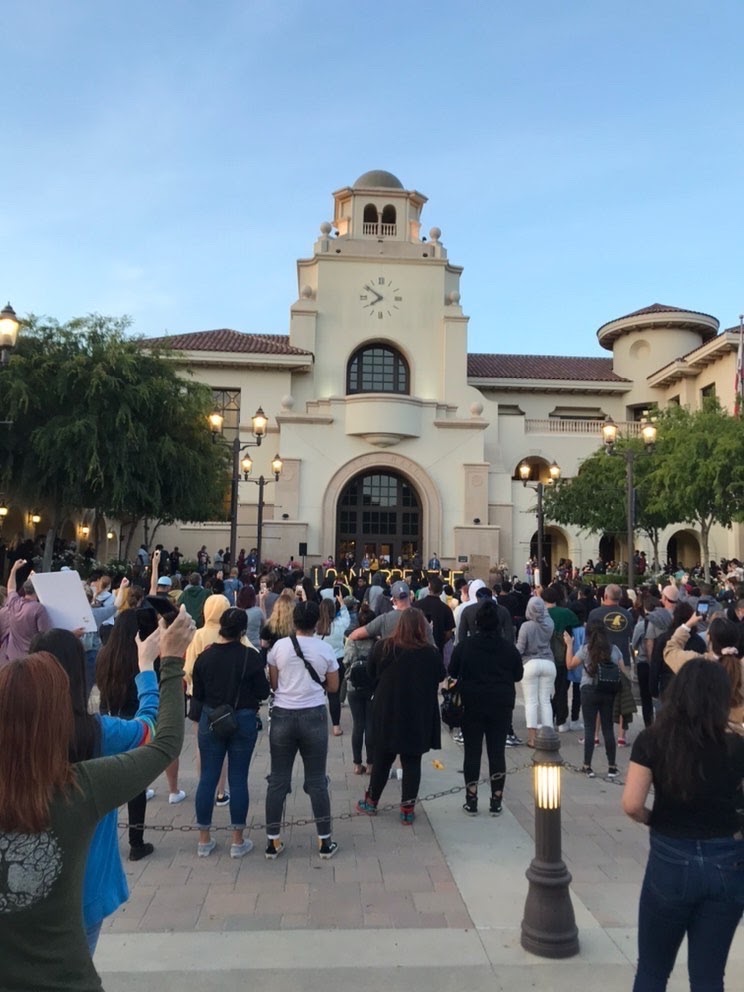
“Online activism is so important because in today’s world everything takes place on social media. I’m pretty sure most of us heard the news about George Floyd and other black lives lost through social media,” she said. “So it is important for us to use these platforms to get word out that this isn’t okay.”
Online activism has played a large role in these protests – while many are still stuck indoors under stay-at-home orders and COVID-19 concerns, there are an abundant amount of social media posts with links to petitions, donation funds, calls-to-action and even informative posts detailing how you can help when you cannot leave your home.
“I think using social media is a good tool for activism, but after a certain point it becomes passive,” St. John’s senior Ben Goulding said. “It is important to spread the message through social media, but I think that goes hand in hand with group protest. Of course many of us, myself included, live in situations where we have loved ones that are vulnerable when it comes to COVID-19, so some can’t attend protests – in that case, find other paths or lanes of protest and other means to shed light on the issues at hand.”
Smaller demonstrations outside of metropolitan cities are also taking place. Through the efforts of local organizers, these protests are an outlet to express the same outrage, pain and hopes for change.
Goulding attended one such demonstration, a candlelight vigil in Temecula, California, just an hour outside of San Diego, on May 31. Organized by the Temecula Valley Democrats, the vigil for Floyd and other victims of police brutality was held in front of Temecula City Hall. Photos on the Temecula Valley Instagram account (@temecula_valley_dems) show a neon sign that was placed on the city hall’s steps that read, “I can’t breathe.”
“It was very peaceful and was a beautiful event, with an amazing turnout of people from all over the area. There were powerful speakers from the black community in our neighborhoods, one of which was the local NAACP representative who talked about the importance of action through words and protest,” Goulding said. “The evening ended with one of the speakers reading the names of Ahmaud Arbery, Breonna Taylor, George Floyd and the countless others who lost their lives to police violence as us in the crowd held up candles.”
“It was important for me to stand with the members of my community in unison to detest police brutality, while simultaneously celebrating the lives of George Floyd and others who lost theirs far too soon,” Goulding said.
Just an hour south of Temecula, in Los Angeles a curfew has been enforced by Mayor Eric Garcetti. The 6 p.m. curfew enforced from June 1 to June 2 has now been changed to 8 p.m. as of June 3.
Pharmacy student Asna Omarzi also attended a small demonstration in her hometown of Metuchen, New Jersey.
“It’s a small, predominantly white town. [The demonstration] took place at a MLK statue we have near our library which overlooks a very busy street near our downtown. Protesters were lined up along the street, wearing masks and trying to maintain distance,” Omarzai said. “Overall, the experience I had was very educational and inspiring. I was surrounded by people who shared the same ideas and goals as me. The protest was filled with people of many different backgrounds and we protested with unity and peace.”
Omarzi also donated through St. John’s Muslim Student Association, who created a bingo board on their Instagram that members could share to help raise money.
“The funds raised will be split to organizations such as: Reclaim the Block, Black Visions Collective, Free Them All 4 Public Health, I Run with Maud fund, Al-maa’uun and North Star Health Collective,” Omarzi said. “Although online activism obviously isn’t the same as physical activism, using one’s social media as a platform can be just as beneficial.”
As of June 3, Derek Chauvin, the former police officer whose original charge was third-degree murder in the case of George Floyd, is now being charged with second-degree murder, according to a tweet by Minnesota Senator Amy Klobuchar.
Three former Minneapolis police officers, Tou Thao, J. Alexander Kueng and Thomas Lane, are also being criminally charged as of June 3, according to the senator.
“I hope people don’t let this die down like they did the rest and we continue to pressure the government to take more action,” Khumbah said. “The system was never supposed to give us the rights we deserve and we’ve had enough.”
Scheibler expressed the same sentiment and urged people to take to the polls and vote.
“I hope that this activism fuels the citizens in our country to take action and to vote in November,” she said. “Our police system is broken, and it continuously fails to protect black people in America.”
If you enjoyed reading and would like to continue reading more articles like this, please consider donating to the Torch here to support student journalism and #KeepTheTorchLit. Make sure to sign up for our newsletter where we keep you updated on all things St. John’s, and more!



